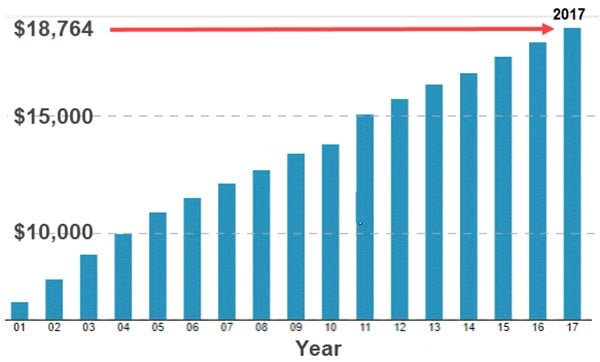In the absence of meaningful government initiatives, employers are on the front lines, faced with choosing either to reign in exploding healthcare costs or to bear the financial consequences.
In recent months, several notable actions have demonstrated a recognition by large employers that they must play a central role in confronting rising healthcare costs. These include the announcement by the Amazon/J.P. Morgan/Berkshire Hathaway partnership to develop an independent healthcare company, Apple’s launch of internal health centers, and Walmart’s expansion of its Centers for Excellence program. Walmart’s program funds 100% of employee costs for treatment of serious health conditions at elite medical centers where the company has negotiated prices and validated the quality of the care provided.
Berkshire’s CEO Warren Buffet, “the Oracle of Omaha,” is known both for his relentless optimism and his prophetic insights. In Buffet’s view, rising healthcare costs—not the tax system—are the greatest threat to American business.
In discussing the partnership, he said, "The ballooning costs of [health care] act as a hungry tapeworm on the American economy." U.S. employers fund the healthcare costs of over 150 million Americans under 65. Buffet noted that corporate taxes, which are frequently cited as a factor in U.S. competitiveness were about 4% of GDP in 1960, and now stand at about 2%. In contrast, he said, healthcare costs were about 5% of GDP in 1960 and now stand at "about 17%."
Indeed, the federal government's CMS (Centers for Medicare and Medicaid Services) expects rising medical expenses to outpace inflation significantly in coming years, with healthcare costs increasing to 19.9 percent in 2025.
For businesses and our overall economy, healthcare expenses have now become a seemingly incurable metastasizing cancer.

Average Cost of Employer-Sponsored Family Coverage (Employer Plus Employee Premiums 2001-2017) Source: Kaiser/HRET Survey of Employer-Sponsored Health Benefits
A System with Misaligned Incentives
The entities that now dominate the convoluted American healthcare system have a vested interest in year-over-year price increases:
- While insurers claim to be working to control costs, they are now realizing extraordinary gains, with a New York Times headline declaring, "Health Insurers Are in a Profit Spiral." It’s difficult to believe that these companies view cost control as a central business objective. If they did, would earnings be exploding and CEO pay skyrocketing in the face of their miserable failure to achieve the business goal of cost control? NPR identified this concern in a segment titled, "As Cost of U.S. Health Care Skyrockets, So Does Pay of Health Care CEOs." Recently, Pro Publica examined insurer's pricing practices in an article titled, "Why Your Health Insurer Doesn't Care About Your Big Bills." For self-funded plans, insurers are compensated with “an administrative fee” that is typically a percentage of the total claims paid by a company's policy. If the dollar value of these claims decreased dramatically, insurer profits in this business segment would similarly plummet.
- Our hospitals have, in many cases, become businesses with an aggressive "take-no-prisoners" mentality. Many of the nation’s leading hospitals enjoy nonprofit status, with annual subsidies of $30 billion. However, studies have documented that these nonprofits seek higher prices and monopoly-like geographic market domination as aggressively as their for-profit competitors. At the same time, the pricing of hospital services, whether for-profit or not-for-profit, is intentionally opaque to prevent prospective patients from comparing the total costs of specific procedures. In one case, the Huffington Post found a staggering cost difference, with two New York area hospitals charging $99,690 and $7,044 for the same treatment.
- Our fee-for-service doctor compensation system is broken. We may talk a great deal about value-based care, but doctors still operate primarily in a fee-for-service world, where increasing their earnings depends on performing more and more services, regardless of the associated value.
In this mix, the treatment of chronic illnesses merits attention. At one time, the Centers for Disease Control and Prevention (CDC) estimated that treatment for chronic conditions accounted for 75% of U.S. health spending. With our current diabetes epidemic, it’s doubtful this statistic has dropped markedly. Chronic illnesses are particularly poorly addressed by episodic fee-for-service visits. Patients with chronic ailments often receive unnecessarily expensive duplicate tests, conflicting advice, and gaps in care.
The Challenge Ahead
All of this brings us back to the announcement of Buffet and partners, which suggests that healthcare reform has now become too important to remain the purview of entrenched participants. The changes that can lead to lower healthcare costs will come from outside the system.
Many healthcare experts greeted the announcement of the Amazon/J.P. Morgan/Berkshire Hathaway partnership with skepticism. In contrast, we believe that market forces, combined with a range of emerging services will enable employers to succeed in achieving the healthcare cost containment that has eluded the nation for decades.